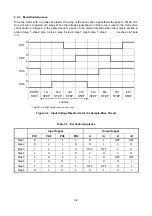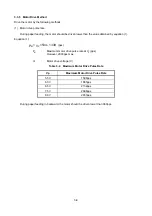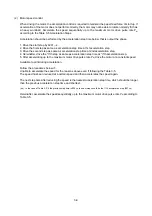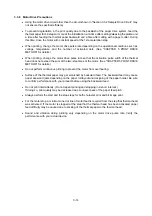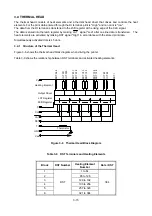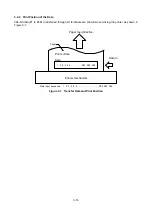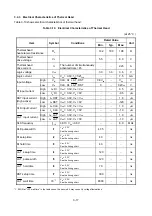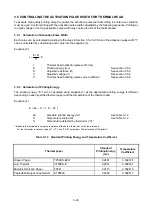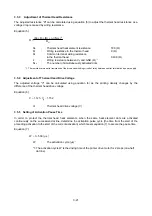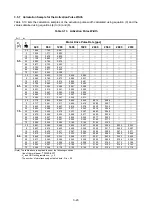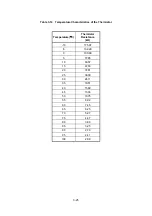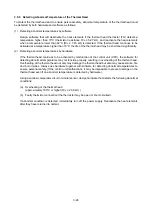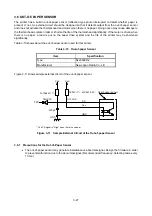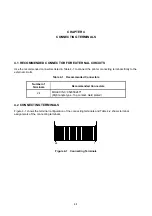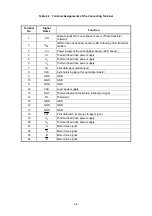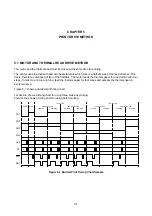
3.5 CONTROLLING THE ACTIVATION PULSE WIDTH FOR THERMAL HEAD
To execute high quality printing using the printer, the activation pulse width according to printer use condition
must be used. Control printing with the activation pulse width calculated by the following sequence. Printing at
too high voltage or too long activation pulse width may shorten the life of the thermal head.
3.5.1 Calculation of Activation Pulse Width
Each value can be calculated according to the steps in Section 3.5.2 to 3.5.6 and the activation pulse width "t"
can be calculated by substituting each value into the equation (3).
Equation (3):
C
V
R
E
t
2
t
:
Thermal head activation pulse width (ms)
E
:
Printing energy (mJ)
See section 3.5.2
R
:
Adjusted resistance (
Ω
)
See
section
V
:
Adjusted voltage (V)
See section 3.5.4
C
:
Thermal head activation pulse cycle coefficient
See section 3.5.6
3.5.2 Calculation of Printing Energy
The printing energy "E" can be calculated using equation (4) as the appropriate printing energy is different
depending on each specified thermal paper and the temperature of the thermal head.
Equation (4):
25
T
T
E
=
E
X
C
25
-
-
E
25
:
Standard printing energy (mJ)
T
C
: Temperature
coefficient
T
X
:
Temperature detected by thermistor (°C) *
*: Measure the temperature using the resistance of the built-in thermistor on the thermal head.
For the thermistor resistance value at T
X
(°C), see "3.5.8 Temperature Characteristics of Thermistor".
Table 3-12 Standard Printing Energy and Temperature Coefficient
Thermal paper
Standard
Printing Energy
(mJ)
Temperature
Coefficient
Nippon Paper
TF50KS-E2D
0.2481
0.002726
Jujo Thermal
AF50KS-E
0.2614
0.002407
Mitsubishi Hi-Tech Paper
F5041
0.2713
0.002415
Papierfabrik August Koehler AG KT55F20
0.2652
0.002917
3-20

